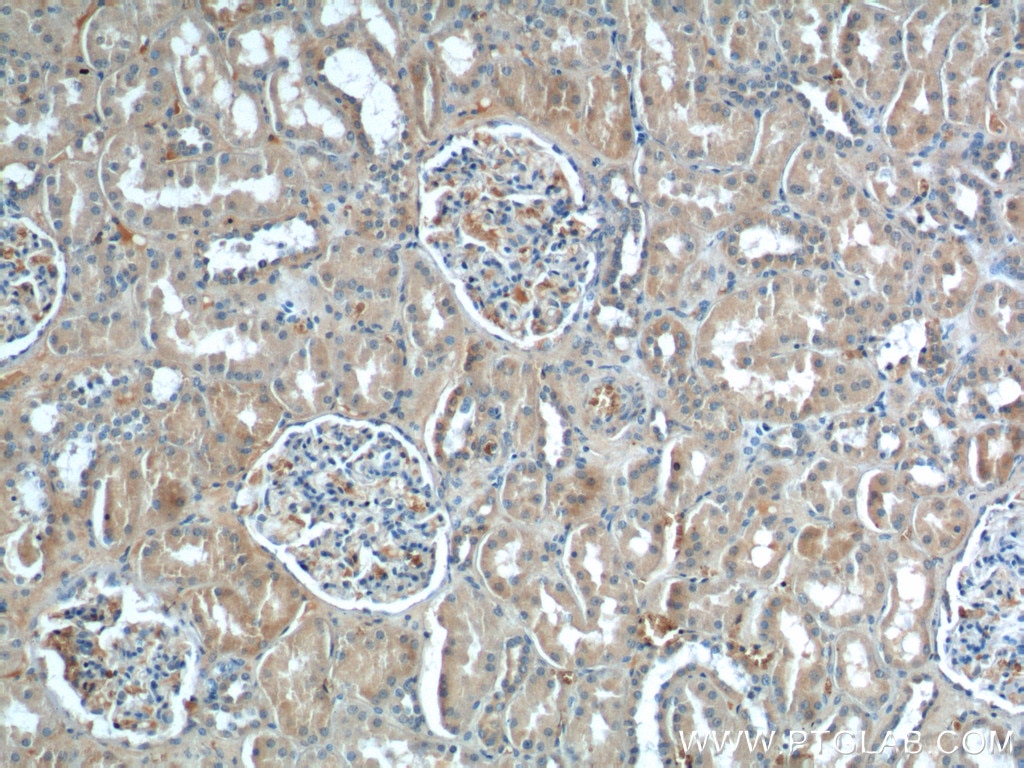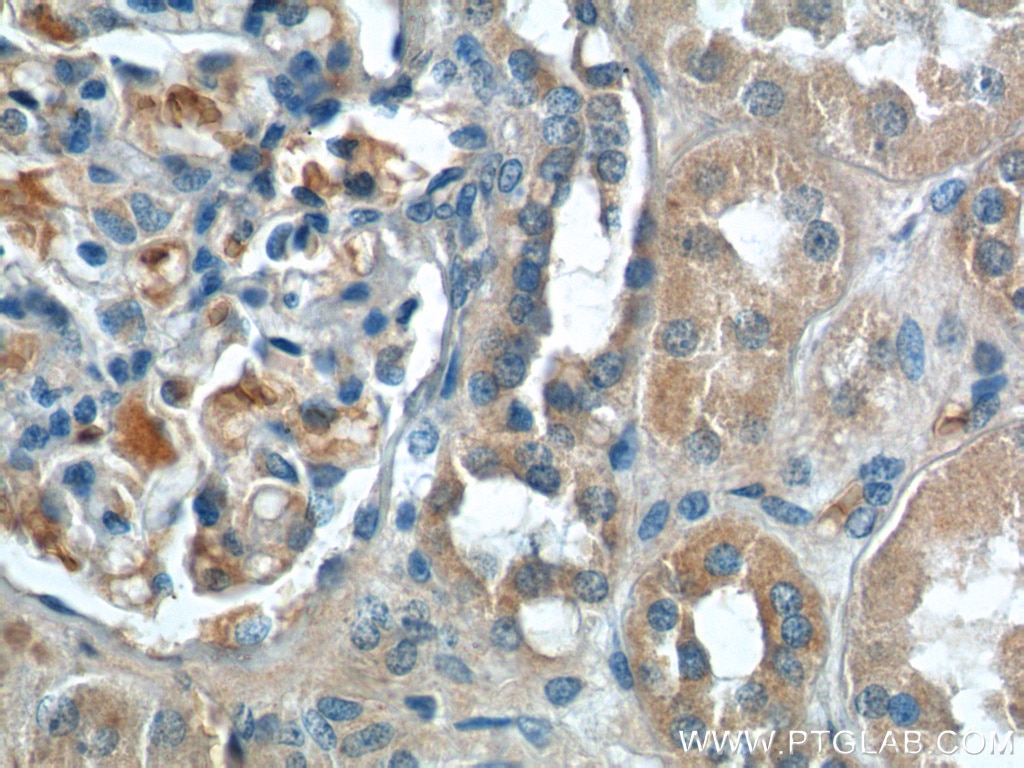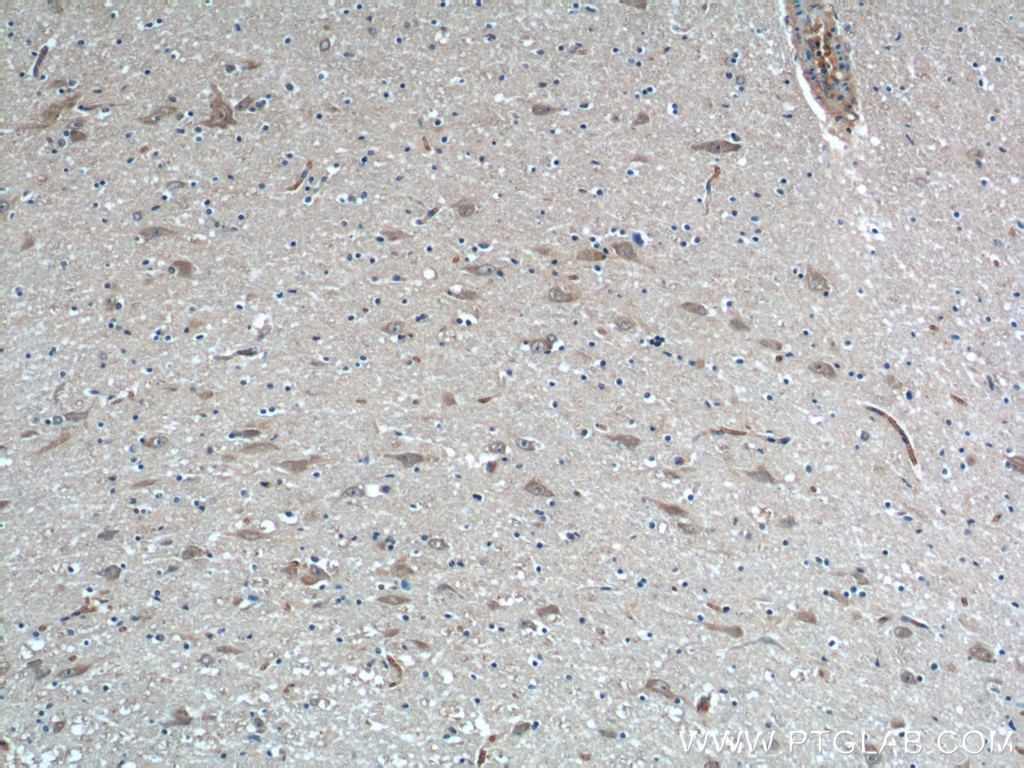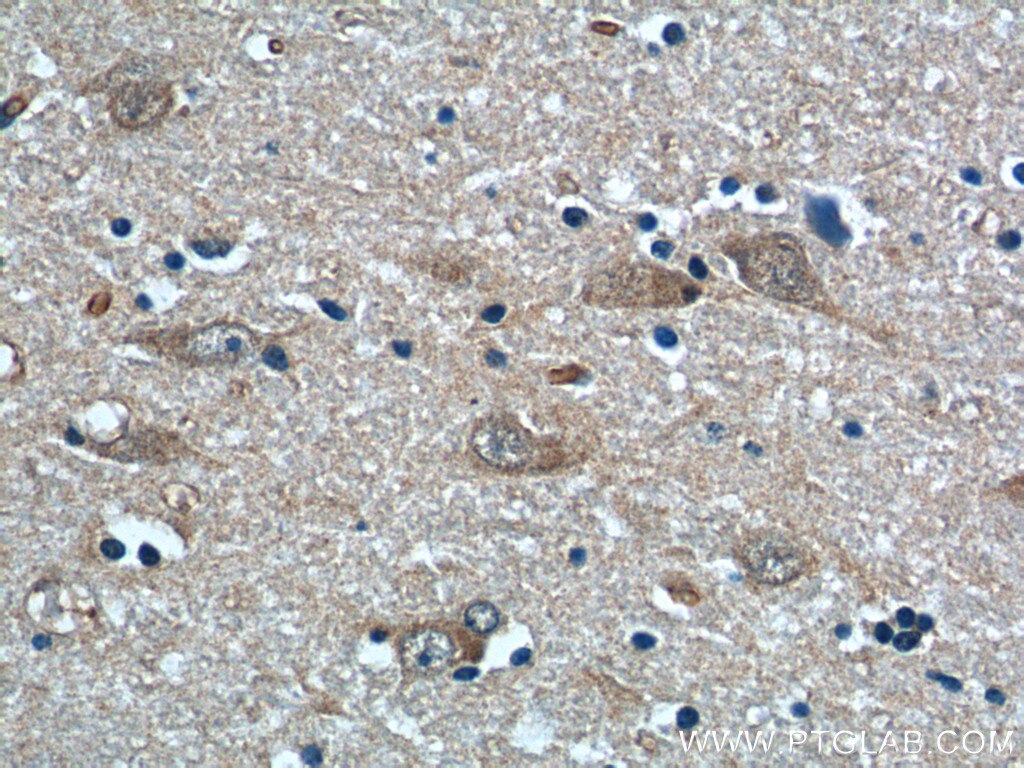Validation Data Gallery
Tested Applications
| Positive IHC detected in | human kidney tissue, human hypothalamus tissue Note: suggested antigen retrieval with TE buffer pH 9.0; (*) Alternatively, antigen retrieval may be performed with citrate buffer pH 6.0 |
Recommended dilution
| Application | Dilution |
|---|---|
| Immunohistochemistry (IHC) | IHC : 1:20-1:200 |
| It is recommended that this reagent should be titrated in each testing system to obtain optimal results. | |
| Sample-dependent, Check data in validation data gallery. | |
Product Information
22311-1-AP targets NPVF in IHC, ELISA applications and shows reactivity with human samples.
| Tested Reactivity | human |
| Host / Isotype | Rabbit / IgG |
| Class | Polyclonal |
| Type | Antibody |
| Immunogen |
Peptide 相同性解析による交差性が予測される生物種 |
| Full Name | neuropeptide VF precursor |
| Calculated molecular weight | 22 kDa |
| GenBank accession number | NM_022150 |
| Gene Symbol | NPVF |
| Gene ID (NCBI) | 64111 |
| RRID | AB_3669395 |
| Conjugate | Unconjugated |
| Form | |
| Form | Liquid |
| Purification Method | Antigen Affinity purified |
| UNIPROT ID | Q9HCQ7 |
| Storage Buffer | PBS with 0.02% sodium azide and 50% glycerol{{ptg:BufferTemp}}7.3 |
| Storage Conditions | Store at -20°C. Stable for one year after shipment. Aliquoting is unnecessary for -20oC storage. |
Background Information
The human RFamide-related peptide gene, RFRP (also designated NPVF or C7orf9), is responsible for encoding three small neuropeptides designated NPSF, RFRP-1 RFRP-2 and RFRP-3 (NPVF). Neuropeptide RFRP-1 acts as a potent negative regulator of gonadotropin synthesis and secretion. Neuropeptides NPSF and NPVF efficiently inhibit forskolin-induced production of cAMP, but RFRP-2 shows no inhibitory activity. Neuropeptide RFRP-1 induces secretion of prolactin in rats. Neuropeptide NPVF blocks morphine-induced analgesia. This antibody can recognize neuropeptide VF precursor and neuropeptide NPSF.
Protocols
| Product Specific Protocols | |
|---|---|
| IHC protocol for NPVF antibody 22311-1-AP | Download protocol |
| Standard Protocols | |
|---|---|
| Click here to view our Standard Protocols |




